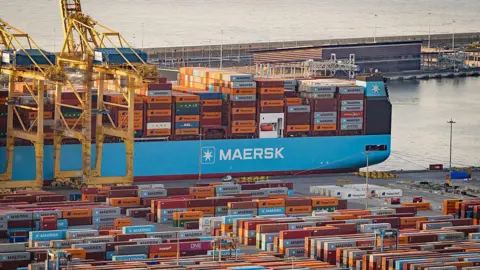On July 28, 2025, after intense negotiations led by high-profile trade officials from the United States and the European Union, a significant tariff agreement was achieved. This agreement, which came just prior to a new series of tariff discussions between the US and China, marks a pivotal moment in transatlantic relations. The reaching of this deal demonstrates the importance of direct communication, as both US President Donald Trump and European Commission President Ursula von der Leyen had to engage face-to-face to finalize it. The personalized involvement of leaders in such negotiations has been critical to pushing agreements over the finish line, often when breakthroughs seemed unlikely.
This trade deal holds considerable consequences for both regions, given their interconnected economies. Often referred to as “the world’s largest bilateral trade and investment relationship,” relationships between the US and EU involve substantial flows of goods and services, which affect businesses and employment on both sides. For the Trump administration, the deal represents a noteworthy win, reinforcing their negotiation strategies and supporting the narrative that the current administration is successfully advocating for American interests abroad. In a post on social media platform X, Vice President JD Vance celebrated this achievement by asserting that the American media would highlight Trump’s near-total acquisition of the desired terms, showcasing the deal’s positive reception.
Although American officials are heralding this agreement as a significant victory, it is not without drawbacks for the EU. Importantly, the European bloc successfully negotiated a reduction in the proposed tariffs, settling at 15% rather than the originally threatened 30%. Nonetheless, this tariff remains a substantial increase compared to pre-existing rates, particularly for European automotive manufacturers, whose vehicles will now be subject to the 15% import tax, rather than the 25% tariff that had been set in place previously.
The trade agreement also comes with additional concessions from the EU, which will grant American exports zero tariffs, while US tariffs on EU steel and aluminum exports remain high at 50%. In terms of financial implications, the agreement is projected to bring the US government approximately $90 billion in tariff revenues over time. Moreover, Trump noted that the EU has committed to purchasing significant quantities of US energy products, as well as military arms, projecting these expenditures to approach hundreds of billions of dollars.
Negotiations leading up to this agreement were not without their challenges. The EU needed to portray itself as a formidable negotiator capable of defending its interests against the seemingly aggressive stance of the Trump administration, particularly in light of existing trade deficits. These negotiations became even more pressing as the deadline of August 1 approached, leaving both sides facing substantial pressure.
European Commission President Ursula von der Leyen acknowledged the urgent need to address trade deficits, recognizing the necessity for a newly balanced agreement. The backdrop of the talks included economic challenges within Europe, further exacerbated by apprehensions surrounding potential US threats to military support for Ukraine and trade relations with NATO members. Critics of the EU’s position voiced concerns about their negotiating power, suggesting that the threat of escalating tariffs left the bloc in a vulnerable position—resulting in a deal that, while better than expected, still fell short of favorable outcomes for EU stakeholders.
As the global trading landscape evolves, the realization of this agreement between the US and the EU signifies a critical turning point in international trade dynamics. With the Trump administration continuing its course of strategic negotiation with major trade partners, including discussions with China, future agreements carry the potential for further reshaping the global economic environment. The recent developments serve as a reminder of the interconnectedness of international trade, as well as the complexities inherent in balancing national interests against collaborative global commerce.












